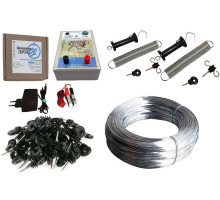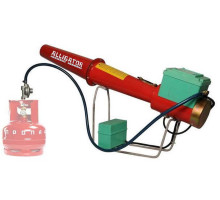Housetraining your dog is an important step in raising a pet that requires patience, consistency, and the right approach. Whether you've adopted a puppy or an adult dog, the training process can take some time. In this article, we'll look at the basic steps that will help you teach your pet to go outside.
1. Preparation for the learning process
Before you start potty training your dog, it's important to prepare yourself. Here's what you'll need:
- Leash and collar: for walking and controlling your dog outside.
- Treats: to encourage your pet for good behavior.
- Patience: The process can take anywhere from a few days to a few weeks.
- Regular schedule: Dogs like routine, so it's important to walk them at the same time.
2. The main stages of training a dog to use the toilet outdoors
Step 1: Observe the dog
Puppies and adult dogs usually go to the bathroom after sleeping, eating, or playing. Watch your dog's behavior to understand when he needs to go. Signs may include:
- Concern.
- Spinning in place.
- Whining.
- Trying to sit down.
Step 2: Take your dog outside regularly
- Take your pet outside every 2-3 hours, especially after sleeping, eating, or playing.
- Choose the same spot for the toilet. Dogs associate smells with certain actions, so this will help them get used to it faster.
- Walk until the dog does its business.
Step 3: Encourage good behavior
- As soon as your dog goes outside, praise him and give him a treat. This will reinforce the positive association.
- Use words of approval, such as “Well done!” or “Good!”.
Step 4: Don't punish mistakes
- If your dog has gone potty inside your home, don't yell at them or poke their nose in the puddle. This can cause fear and slow down the learning process.
- Instead, clean up after your pet using special odor-eliminating products to prevent your dog from returning to that area.
Step 5: Gradually increase the intervals between walks
- Over time, when the dog begins to understand that the toilet is outside, increase the intervals between walks.
- Adult dogs can usually tolerate it longer than puppies.
3. Tips for successful training
- Create a feeding routine: feed your dog at the same time to control the digestive process.
- Use a crate or an enclosure: If you can't keep an eye on your dog, put them in a crate. Dogs instinctively don't go to the bathroom where they sleep.
- Be consistent: Don't skip walks, even if you don't have time.
- Consider age and breed: puppies under 4 months old are physically unable to endure long walks, and small breeds such as Chihuahuas may need more frequent walks.
4. What to do if the dog is not trained?
Sometimes the learning process can take a while. Here are some reasons why this happens and how to solve them:
- Stress or fear: If your dog is afraid of the street, give it more time to adapt. Walk in quiet places and gradually increase the time spent walking.
- Health issues: If your dog continues to walk around the house despite your best efforts, consult your veterinarian. He may have a bladder or digestive problem.
- Lack of attention: spend more time exercising and walking.
Housetraining a dog is a process that takes time and effort, but the results are worth it. By following our recommendations, you can raise an obedient and neat pet. And if you haven't found your four-legged friend yet, check out the e-Pet website at https://e-pet.com.ua/ru/sobaki/chykhuakhua , where you can choose a miniature Chihuahua or another breed of dog. Good luck raising your pet!













